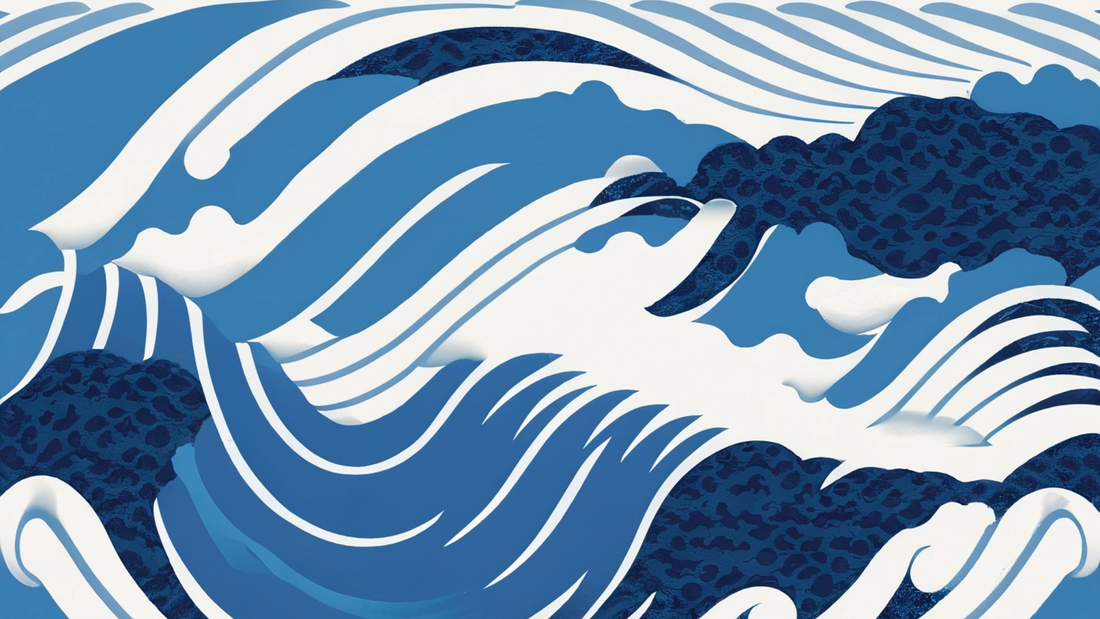Harmony in Motion: Unravelling the Spiritual Dance of Waves
Waves in Japanese culture and design are like an ancient dance between people and the natural world, a connection that goes beyond mere aesthetics. Take a moment to consider the iconic woodblock print, "The Great Wave off Kanagawa," by Hokusai, and you'll feel the pulse of life in those crashing waves.
These waves have a soulful touch, reflecting the very spirit of water itself. In Japanese beliefs, water symbolizes purity, strength, and the gentle but unstoppable flow of life. This symbolism also extends to Shinto rituals, where water is a purifying force.

The resilience of the Japanese people, facing the wrath of natural disasters, is etched in the very nature of waves. Historically, Japan has confronted earthquakes and tsunamis, yet the waves still remain a symbol of strength, embodying the ability to withstand and overcome challenges.
Beyond traditional art, waves influence various crafts, including pottery and textiles. Artisans weave the rhythmic patterns of waves into their creations, adding an aesthetic touch inspired by the natural world. Wander into a traditional Japanese garden, and you'll find waves in the gentle flow of ponds and streams, capturing the rhythm of life. These waves symbolize the flow of life and create a tranquil environment that is aligned with Zen philosophy.
From architecture to interior decor and even fashion, the wave motif continues to make waves (pun intended). It's a nod to simplicity, balance, and an unbreakable tie to the present—a timeless link between the old and the new.
So, when you see waves, it's not just about admiring decorative elements; they are storytellers. Waves aren't just brushstrokes on a canvas or patterns on a vase; they're a deeper connection between the people and the rhythm of the natural world.

